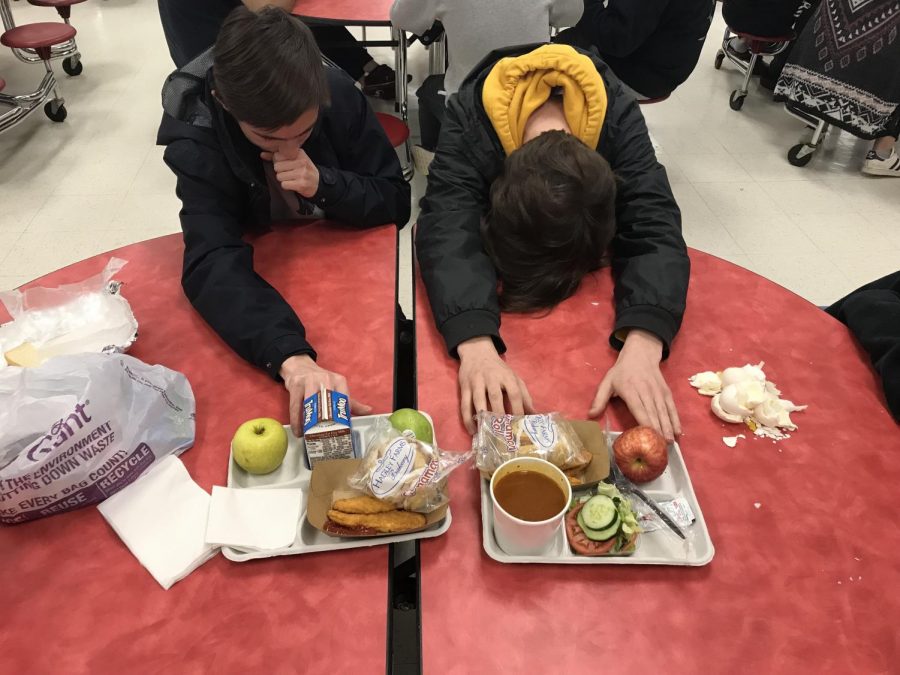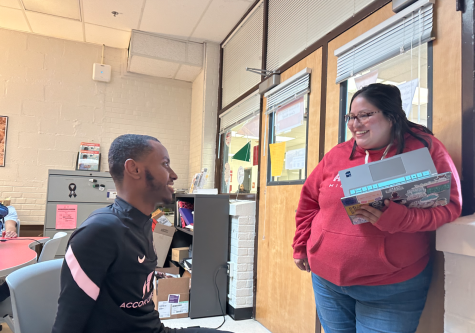Students need to make healthy choices
As the long school day drags on, many students try to find some kind of safe haven where they can just relax.
For most students, the lunch room is exactly that place.
Students have an opportunity to talk to friends and, more importantly, take a 30 min. break from the heavy burden of pay attention in class.
Lunch is also a time where students fuel themselves with food that will give them energy until they arrive back home.
Some students are fortunate enough to bring lunch from home but a majority of students at AHS purchase lunch from the lunch lines.
Every day, students are met with the same problem; the choice between the healthy option or the unhealthy option.
Most students choose the unhealthy option which, disappointingly, is the more accessible option.
Once their 30 mins. of freedom is over, students leave their safe haven with a bad taste in their mouths.
Processed foods that are high in fat, sugar, and salt have become a mainstay of lunches in schools across America. Experts say these unhealthy school lunches are a contributing factor to the childhood obesity epidemic.
An estimated 17% of children and adolescents ages 2-19 years are obese according to the Centers for Disease Control and Prevention. If schools serve unhealthy food, this could negatively affect anyone’s health which would in turn affect their academic performance.
However, a change for the better comes with its challenges. There are many obstacles to improving unhealthy school lunches, not the least of which is money.
Schools receive $2.68 for each free meal served through the National School Lunch Program, a federal meal program. That $2.68 must cover payment not just for the food, but also any labor, facility, and structural costs a school incurs. Additionally, schools are mandated to use part of that money for milk purchases. Not only is that money not enough to help food services but 65% of AHS students benefit from free or reduced lunch.
Despite the many obstacles that schools face, their lunch program has experienced mixed results.
Most menus now include more whole grains and more fruit and vegetable options and less salt.
But they also offer an abundance of factory-farmed animal products and heavily processed foods, like corn dogs, tater tots, and cheese pizza.
At AHS, the cafeteria offers plenty of healthy food to students. “We’re offering a variety of deli items including salads, vegetable wraps and healthy sandwiches,” said Michael Soleto, the Food Services Kitchen manager. “Also, students are also always able to order vegetarian meals.”
The AHS lunch program is also making improvements to the quality of the food that is provided. “Since the beginning of my time working in FCPS schools, the salads have evolved by adding more variety for the students…I also hear that there will be more changes coming as far as variety is concerned,” Soleto said.
Like AHS, the government isn’t entirely ignoring the issue of unhealthy school lunches. The Healthy School Meals Act of 2010 (H.R. 4870) was introduced in Congress in March and referred to committee. A key provision is a pilot program for selected schools to offer plant-based protein products and nondairy milk substitutes. Although America’s school lunches have improved since Congress strengthened the standards for the national school lunch program in 2010, they have a long way to go.
Although schools across America still include unhealthy food in their menu, it is up the students to choose their food wisely.
When health is concerned, it is the students responsibility to make the healthy choice, as there are plenty of healthy food choices at AHS.

Manny Precht is a senior and the current Co-Editor in Chief of The A-Blast. It is his second year on staff where he was previously the Health Editor. In...










